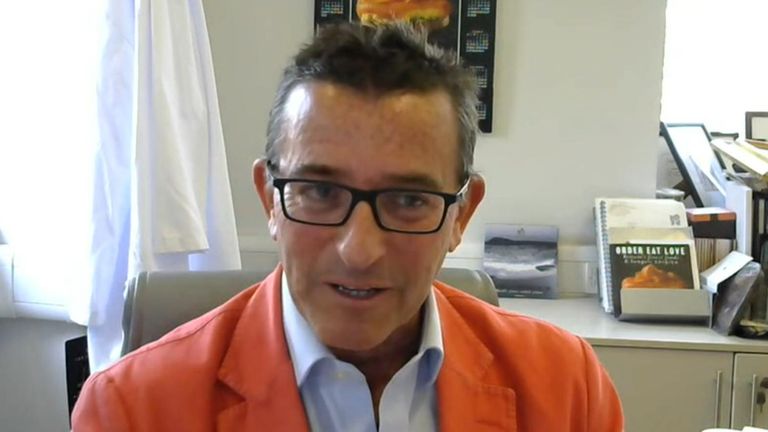The official estimate of the pandemic "R" number has risen slightly over the last week, according to a consensus by scientists advising the government.
The Scientific Advisory Group for Emergencies (SAGE) said the UK reproduction number for the coronavirus is now between 0.7 and 1, up from 0.5 to 0.9 last week.
The slight increase, based on calculations done by six research groups, is being attributed to cases in care homes and hospitals accounting for a greater proportion of the overall total.
It is too soon after the easing of the lockdown for increased movement of people to show up in the data.
R is a measure of how fast a virus is spreading. Above 1 an outbreak is growing; the further below 1 the faster it's shrinking.
Advertisement
It's estimated using data from hospital admissions, intensive care demand, deaths and the number of social contacts people have.
Health Secretary Matt Hancock said the R number was based on data from around a fortnight ago and he did not believe the figure was above one.
More from Covid-19
Speaking at the government's daily news briefing, he said: "We are constantly keeping the R under review. We don't think that it is above one. So that meets that test."
He told Sky News: "On the timing, this is based on data from a couple of weeks ago because of the way it is measured but also from the survey data that the ONS (Office for National Statistics) has published.
"And as that survey grows, the measure of R will become more timely but even in countries that have had large-scale survey testing for some time like Germany there is still something of a lag.
"It is an incredibly important figure for policymakers but it is one data point to look at alongside the level of new cases."
Deputy chief medical officer Dr Jenny Harries said: "R is a very standard way of looking and comparing what is happening and it's a really important measure.
"But the real outcome we are looking for is the reduction in the number of cases and getting rid of the epidemic in the UK so that is our focus, not R. "
"R is a representation of what is happening in that fight", and she explained the reasons for a range in the R number.
She said: "Partly because a number of different models are used to model this data and it's important that they challenge each other and that we get the consistency of that.
"Partly, the data comes from historic data. Obviously we can't predict precisely so we're estimating it on different sources of information so things like hospital admissions that have happened historically.
"And then I think thirdly importantly, we know that we have slightly different R values relating to some areas of risks.
"So obviously in recent weeks, care homes have been heightened interest, hospitals also and we keep an eye on those. So this is very much a national average."

SAGE is currently trying to calculate regional R numbers to reflect higher transmission in the North East and Scotland and lower rates in London.
Read More – Source
[contf]
[contfnew]

sky news
[contfnewc]
[contfnewc]





